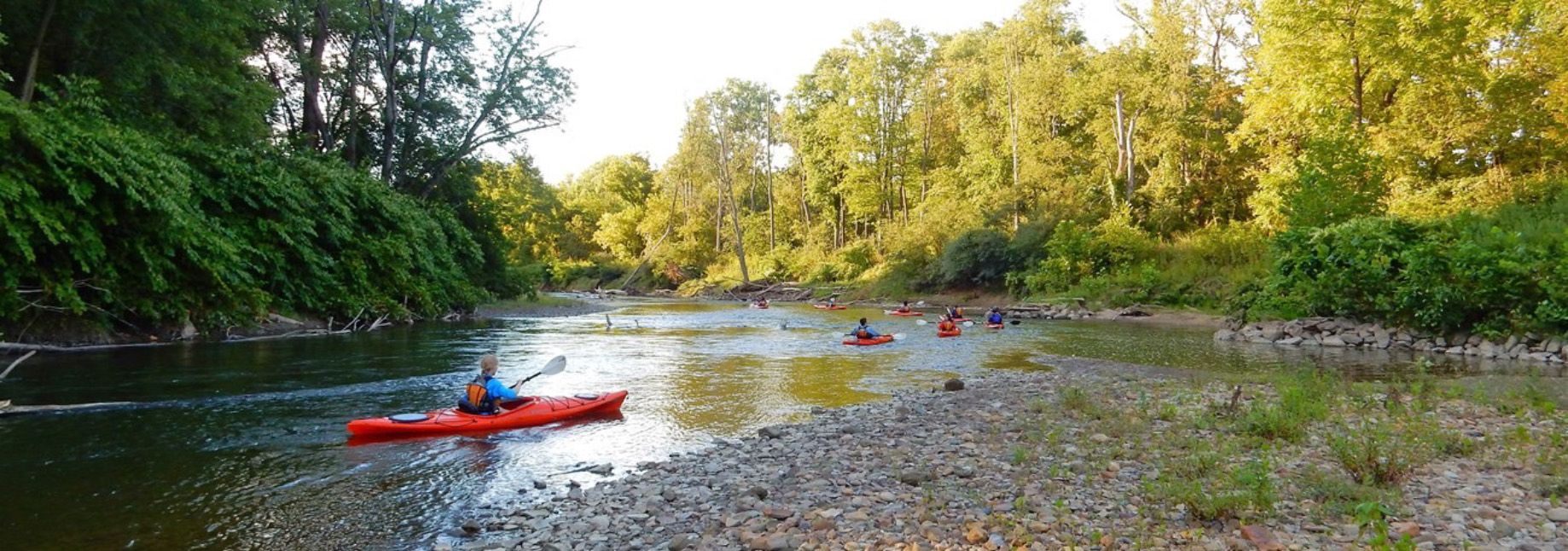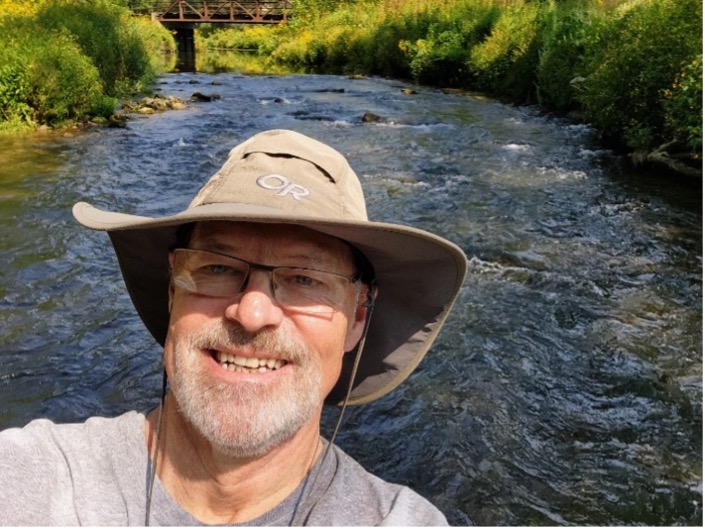The first story, about Iowa’s Grants-to-Counties (GTC) program, is a “good news” story showing how a conversation between two Iowa environmental leaders created a program that has worked to help protect Iowa’s groundwater for nearly forty years. Although the GTC program has been under-utilized in recent years, new efforts to better inform Iowans that they can get their private water wells tested for free through their county environmental health departments is one of the ongoing benefits of this program, which was part of the 1987 Groundwater Protection Act.
Another program created through the Groundwater Protection Act was a program to fund the closure of Agricultural Drainage Wells (ADWs) in Iowa. ADWs were wells drilled historically to drain wet soils in north central Iowa so they could be farmed, but which also served as direct conduits of pollution from the land surface to groundwater. After nearly 40 years of funding and work, the last registered Agricultural Drainage Well was closed in 2024.
The second story, about the East Nishnabotna River, is a “bad news” story describing how a water quality catastrophe can happen to a river in Iowa, perhaps any river in Iowa, in just an instant. Iowa has yet to address how to successfully prevent similar catastrophes. This article is a call to action for river protection and restoration in Iowa, drawing upon Ohio’s Cuyahoga River as an example of how one of America’s most polluted rivers has been fully restored.
Protecting Groundwater: The Origin of Iowa’s Grants-to-Counties Program
Thanks to a historic 1987 conversation between two Iowa water quality champions, the idea for the Grants-to-Counties program—one of the first initiatives in Iowa to protect groundwater–was hatched.
In 1987, amidst statewide concerns and headlines about high nitrate levels in Iowa’s groundwater and drinking water wells, state representative Paul Johnson was co-writing a piece of landmark water quality legislation called the Groundwater Protection Act. At the same time, Brent Parker, Jasper County Sanitarian, was then president of the Iowa Environmental Health Association—a primary professional organizations of county sanitarians and other environmental health professionals.
The two men had much in common: both were farmers with master’s degrees, both were returned Peace Corps volunteers, and both were dedicated to improving Iowa’s environment and public health. Paul Johnson, a dairy and Christmas tree farmer from Decorah, had a master’s degree in forestry from the University of Michigan and had served in the Peace Corps in Ghana helping local farmers improve their natural resources. Brent Parker, a crop and hog farmer from Newton, had a master’s degree in agricultural engineering from Iowa State University and had served in the Peace Corps in Ecuador helping local farmers improve their farming techniques through irrigation.
In the spring of 1987, in his capacity as president of the Iowa Environmental Health Association, Brent Parker met with State Representative Paul Johnson at the State Capitol in Des Moines to discuss practical ways to address Iowa’s widespread groundwater problems. Citing abandoned wells and improperly-constructed wells as direct conduits of pollution from land aboveground to the groundwater below, Parker proposed that a program was needed to plug abandoned wells, recondition poorly-constructed wells, and provide free water testing for Iowans whose drinking water came from private water wells.

Paul Johnson
Johnson agreed that such a program was greatly needed and would serve as a practical way to begin addressing Iowa’s serious groundwater water quality problems. He proposed that if a fund were to be created for such a program, the Iowa Department of Natural Resources (DNR) could administer the well-plugging and water-testing program. Parker then countered with an idea: why not have county sanitarians do the work of overseeing well-plugging and water testing, since they already issued well construction permits and inspected wells? And, since many counties did not have enough funding to hire a county sanitarian—much less develop an environmental health program–why not offer a grant program to counties that would help all Iowa counties develop their own environmental health program and hire a sanitarian?
Paul Johnson loved the idea and, by the end of the conversation, the plan for a new “Grants to Counties Program” (GTC) was launched. The resulting GTC Program became a part of the new Groundwater Protection Act, which included a minor tax on nitrogen fertilizer to create a fund to support new public water quality initiatives—including the GTC Program and the Leopold Center for Sustainable Agriculture at Iowa State University.
Through this conversation, the idea for the GTC Program was launched as a state grant program to enable county environmental health programs to apply for funding to conduct free testing of private water wells for nitrate and E. coli, to plug abandoned wells, and to rehabilitate wells to protect groundwater and improve the public health of Iowans. In 1988 it was codified through the Iowa Code and continues to be implemented today as 567 Iowa Code section 455b.172(5) Chapter 47, “Private Well Sampling, Rehabilitation, and Closure—Grants to Counties”.

Brent Parker
Since its inception in 1988, the GTC program has funded tens of thousands of private water well tests, plugged thousands of abandoned water wells, and has rehabilitated hundreds of private water wells in Iowa. It serves as an ongoing example of a state program that has worked effectively in serving to protect groundwater and public health.
Both men were proud of how a simple idea turned into one of Iowa’s first groundwater protection programs. Late in their lives, however, this author heard both men say, “We need to do a lot more”.
The above article is based on Brent Parker’s recollection of the conversation with Paul Johnson that led to the creation of the GTC Program.
Paul Johnson went on to become Chief of the United State Department of Agriculture (USDA) Soil Conservation Service, which was renamed the Natural Resources Conservation Service (NRCS) during his tenure as Chief. He also served as Director of the Iowa Department of Natural Resources and became known as one of Iowa’s most influential conservationists. He died in February of 2021 at the age of 79.
Brent Parker went on to work as a Senior Environmental Engineer and team lead in the onsite wastewater and private well program for the Iowa Department of Natural Resources and was nationally known for his work and leadership in the field of environmental health. He died in November of 2022 at the age of 76.
Earth Day: Can we restore a dead river in Iowa?
I wrote the following Earth Day blog a year ago, right before Earth Day of 2024, two months before retiring from my job as Nonpoint Source Coordinator for the Iowa Department of Natural Resources (DNR). I wrote this piece to share my raw emotions about yet another fish kill in Iowa: not a little fish kill on a small stream, but a massive fertilizer leak that killed off all aquatic life within a 60-mile stretch of the East Nishnabotna River in southwest Iowa.
I decided to write about it with emotion for Earth Day because, in my many years working as Nonpoint Source Coordinator for the DNR tasked with cleaning up Iowa’s waters from nonpoint source pollution, I was restricted to writing only about the science of Iowa’s water quality (or lack of it), not about how the state’s poor water quality affected me personally. But this was personal, because the dead river was the river of my childhood hometown—Atlantic, Iowa. This hit close to my heart.
Only a few hours before this blog was to be published for Earth Day of 2024, I received a call from my boss directing me to drop this blog from publication. I was told I couldn’t share this blog as a DNR employee because it might interfere with legal action being initiated by DNR against the farm cooperative responsible for the fish kill. I understood the reasoning and dropped the blog.
At the May 2024 meeting of the DNR’s Environmental Protection Commission, DNR attorneys argued to the Commission to refer the farm cooperative to the Iowa Attorney General’s Office for a harsher than normal penalty. Since DNR environmental fines are limited by code to no higher than $10,000, the attorneys argued that the damage caused to the East Nishnabotna River by the farm cooperative’s negligence was so egregious to Iowa’s water quality it warranted a stiffer penalty, one that could only be issued by the state Attorney General. Commission members, who are appointed by the Iowa Governor, agreed and voted unanimously to refer the farm cooperative to the Iowa Attorney General for a more significant penalty, one more fitting to the environmental damage done to Iowa waters.
Nearly a year later, as of April 2025, Iowa Attorney General Brenna Bird has taken no legal action against the farm cooperative that caused the river kill.
When I heard the news several weeks ago that a 60-mile stretch of the East Nishnabotna River was entirely dead—with 750,000 fish, turtles, and all other aquatic species killed off by a massive liquid fertilizer spill that made the river toxic–I was devastated. I love all of Iowa’s rivers, but the “East Nish” has a special place for me, as it flows through my childhood hometown of Atlantic, in southwest Iowa. Some might find my soft spot for the East Nish laughable, given that it’s better known for severe riverbank erosion, river straightening, and muddy water, but I consider my childhood river sacred.
I was also shocked because I learned just how fast damage to our waters can be inflicted. I’ve been working with watershed projects in Iowa for decades as Nonpoint Source Coordinator for Iowa DNR, as a watershed coordinator, and as a soil conservationist to improve water quality. Most of these projects were long-term, multiple-year efforts trying hard to make incremental progress, so I’m used to slow improvement. However, I was stunned that such a large stretch of river could be completely killed off, all life in it dead, in less than two days. It was heartbreaking.
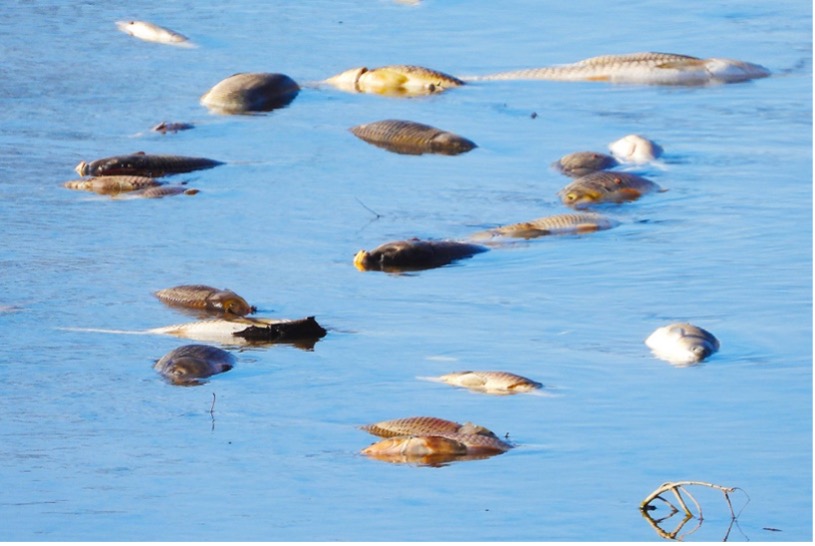
Dead fish floating in Iowa’s East Nishnabotna River in 2024 (from John Lorenzen, Iowa DNR).
The East Nish “river kill” (more than simply a “fish kill”) reminded me of another infamous event in American environmental history: the Cuyahoga River catching fire near Cleveland, Ohio in 1969, forty-five years before the East Nish fish kill. Although the much-maligned and polluted Cuyahoga River had caught fire at other times in its history, the 1969 fire led to protests demanding that something finally be done about it, protests that ended by sparking the first Earth Day in 1970, the creation of the Environmental Protection Agency (EPA) that same year, and the passage of the Clean Water Act in 1972.
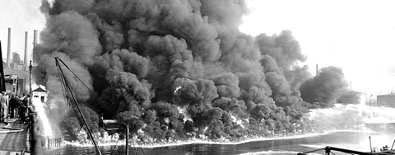
Ohio’s Cuyahoga River on fire (from Cleveland State University Library).
Although the Cuyahoga River had long been treated like a sewer for industrial waste, after that first Earth Day march in 1970, things began to change. The negative attention caused by the 1969 Cuyahoga River fire led to comprehensive water quality improvement efforts over the next 50 years to restore the river and its watershed, which are summarized in a short, educational YouTube video from Ohio EPA.
In 2019, the Cuyahoga was named “River of the Year” by the environmental group American Rivers, 50 years after the notorious fire for which it had become known. Today, it’s no longer a dumping site, but a place where you can fish, kayak, and even stand-up paddle.
Would it be possible for Iowa’s East Nishnabotna River to recover like the Cuyahoga River has? At the moment, I simply doubt it. The two rivers are different from each other, the two watersheds are different, and the primary causes of their river catastrophes are different. Perhaps more importantly, I’m not sure we have the same will, motivation, and sense of urgency here in Iowa to restore the East Nish as there had been among Ohioans to fix the Cuyahoga.
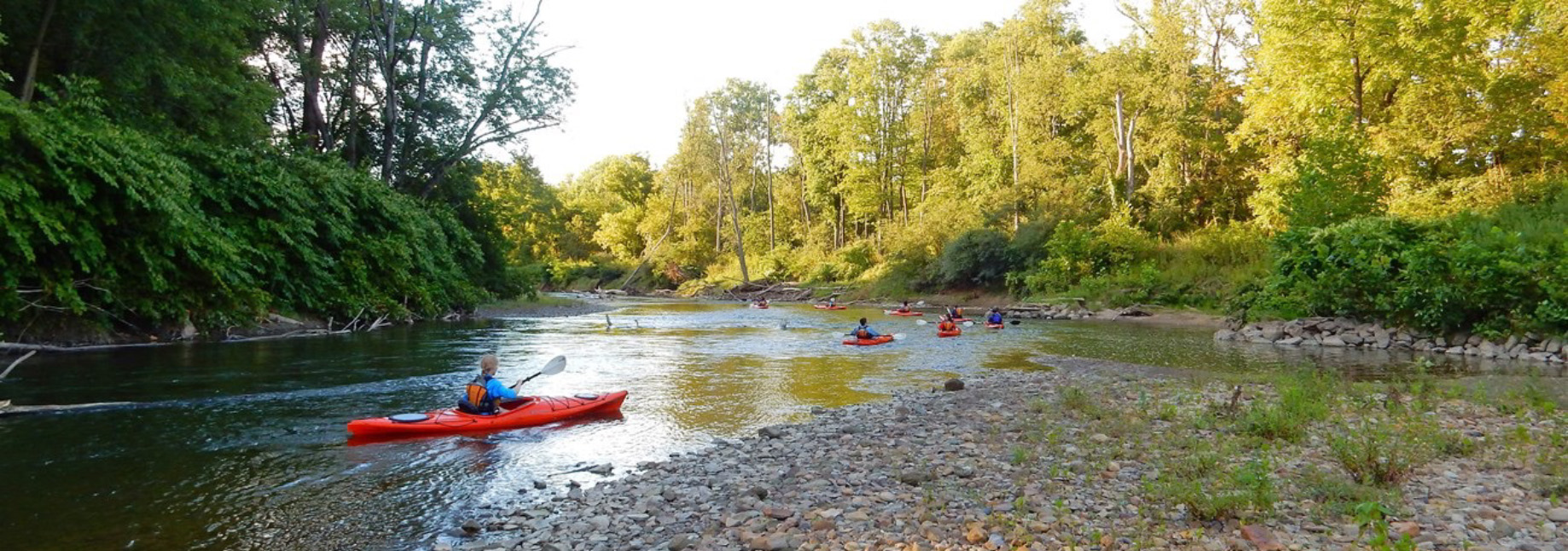
Ohio’s Cuyahoga River restored. It’s no longer on fire.
How can we restore the health of the East Nishnabotna? Perhaps a start would be adopting improved practices at fertilizer loading sites, such as installing more effective berms and removing access to storm drains at these sites, since storm drains connect directly to our rivers and streams. Along the river corridor, we could install more native prairie buffers and increase riverbank stabilization to reduce chronic riverbank erosion on the East Nish. In the entire river watershed, we could increase investments in widespread adoption of more soil conservation and nutrient reduction practices to greatly improve the biological health and beauty of the East Nish.
I was thinking about the East Nishnabotna River recently while walking through woods and fields near my farm in rural Decorah, where I now live, unsure of what realistic actions could turn around the health of my childhood river, when I heard the sound that so moved native Iowa conservationist Aldo Leopold–the call of a sandhill crane. I was reminded of how Leopold was inspired by ecological restoration efforts that led to the recovery of important native wildlife. He was specifically inspired by the return of sandhill cranes following the restoration of wetlands, their native habitat, and he became emotional upon hearing their haunting, prehistoric call as they returned. Leopold argued that if we as a community keep working diligently and intelligently toward ecological restoration, our lands and waters and the species that inhabit them will eventually recover.
If we invest and work diligently, intelligently, and as a community, our dead Iowa river—the East Nishnabotna—can, like the Cuyahoga, be restored.
To turn around Iowa’s water quality, we need all Iowans to care, to feel deeply in their hearts that our waters are worth it, and to do something about it. We certainly need to study our waters and their pollutants scientifically to clean them up. But we also need to WANT to clean them up. We need to feel it in our hearts.
We can do better. Let’s get to work.
